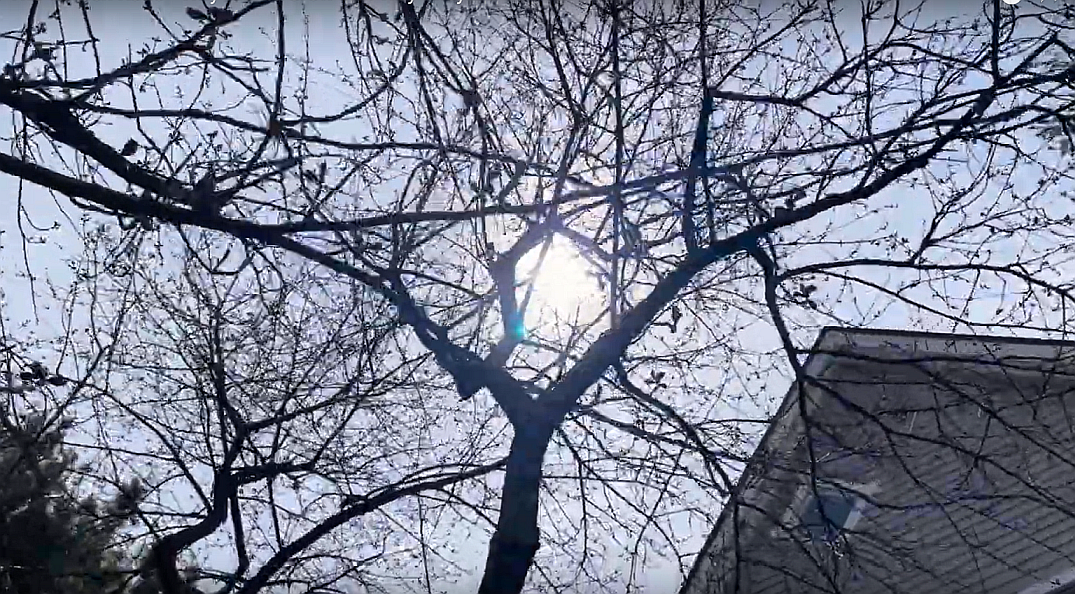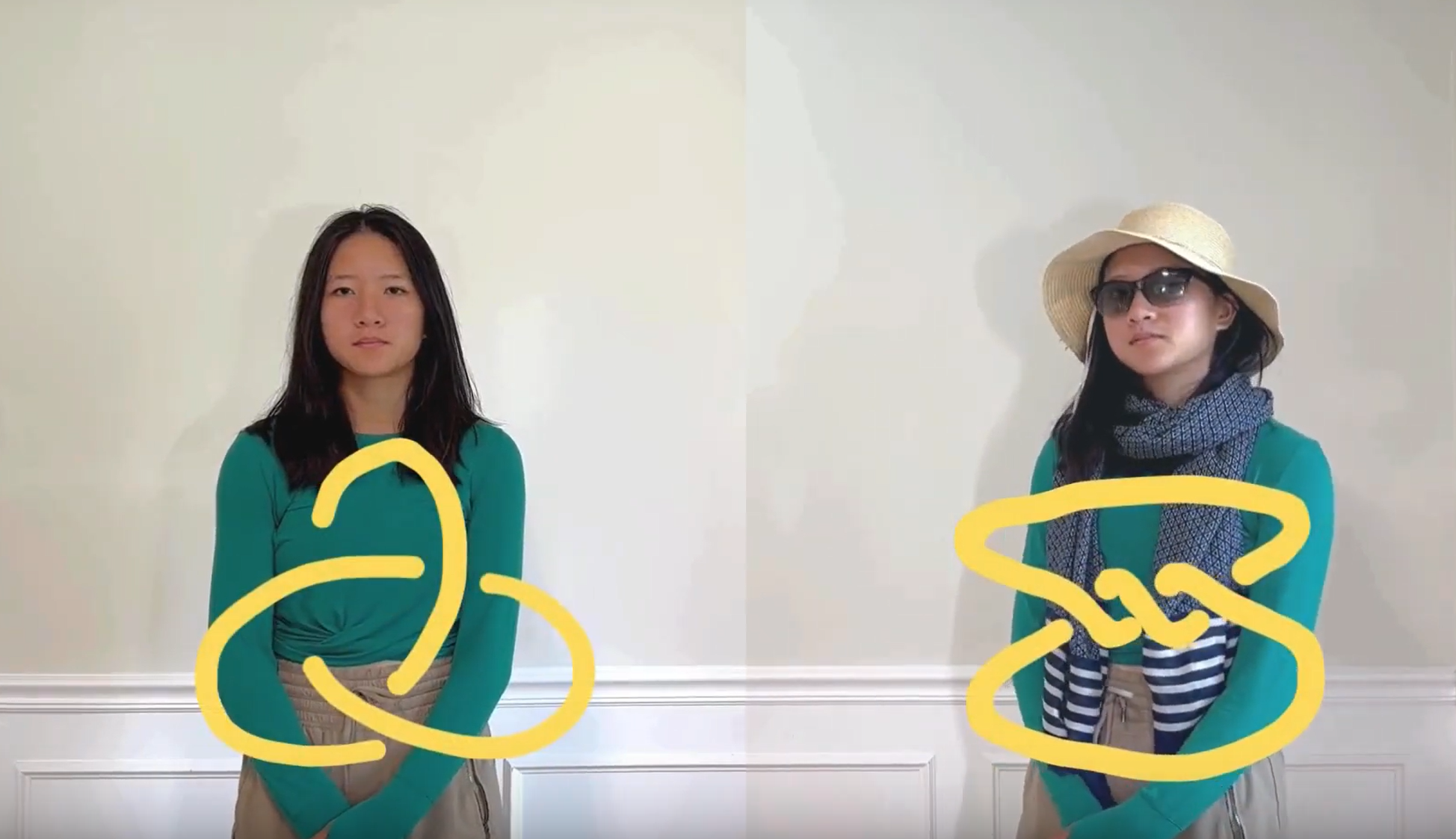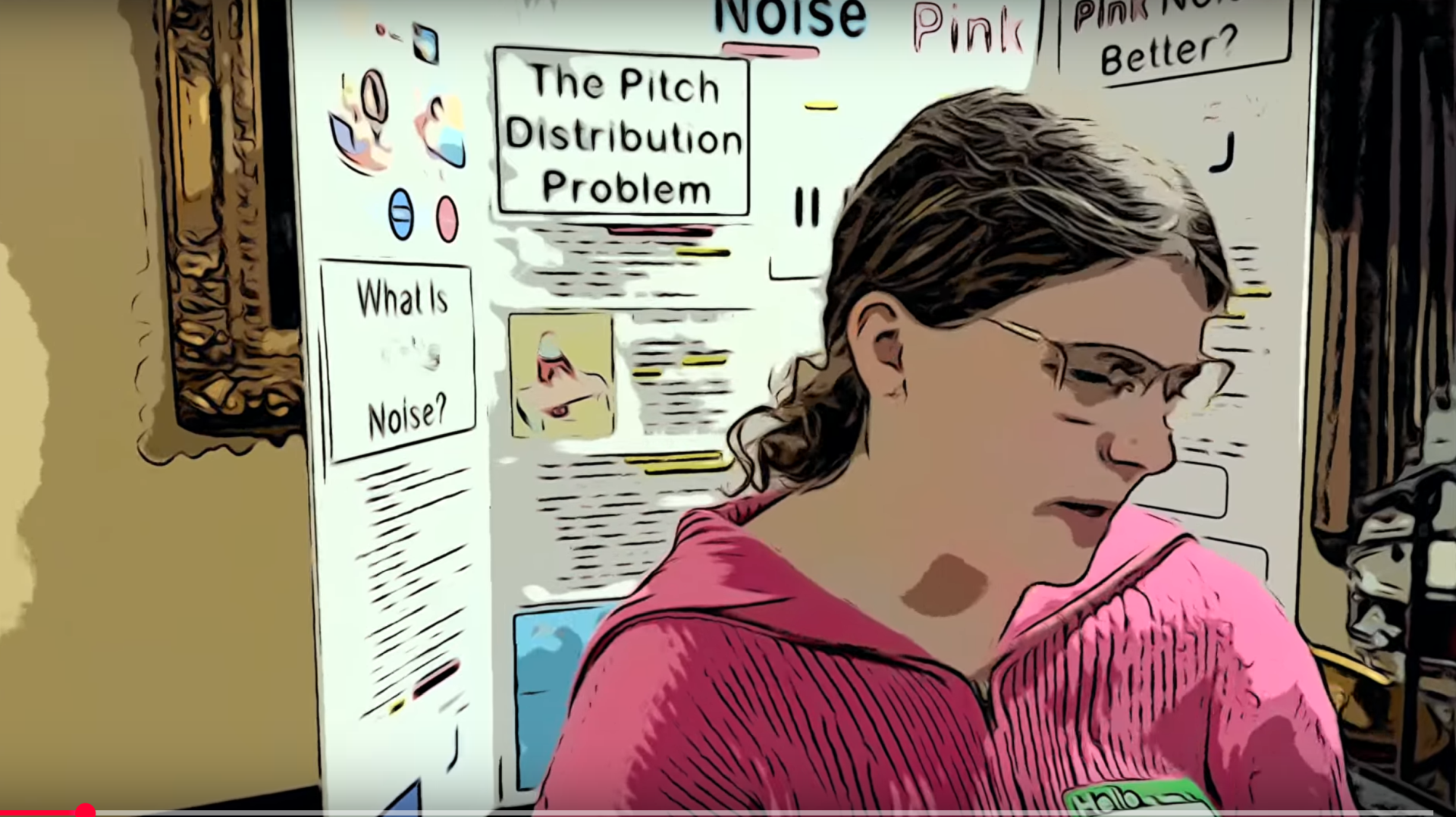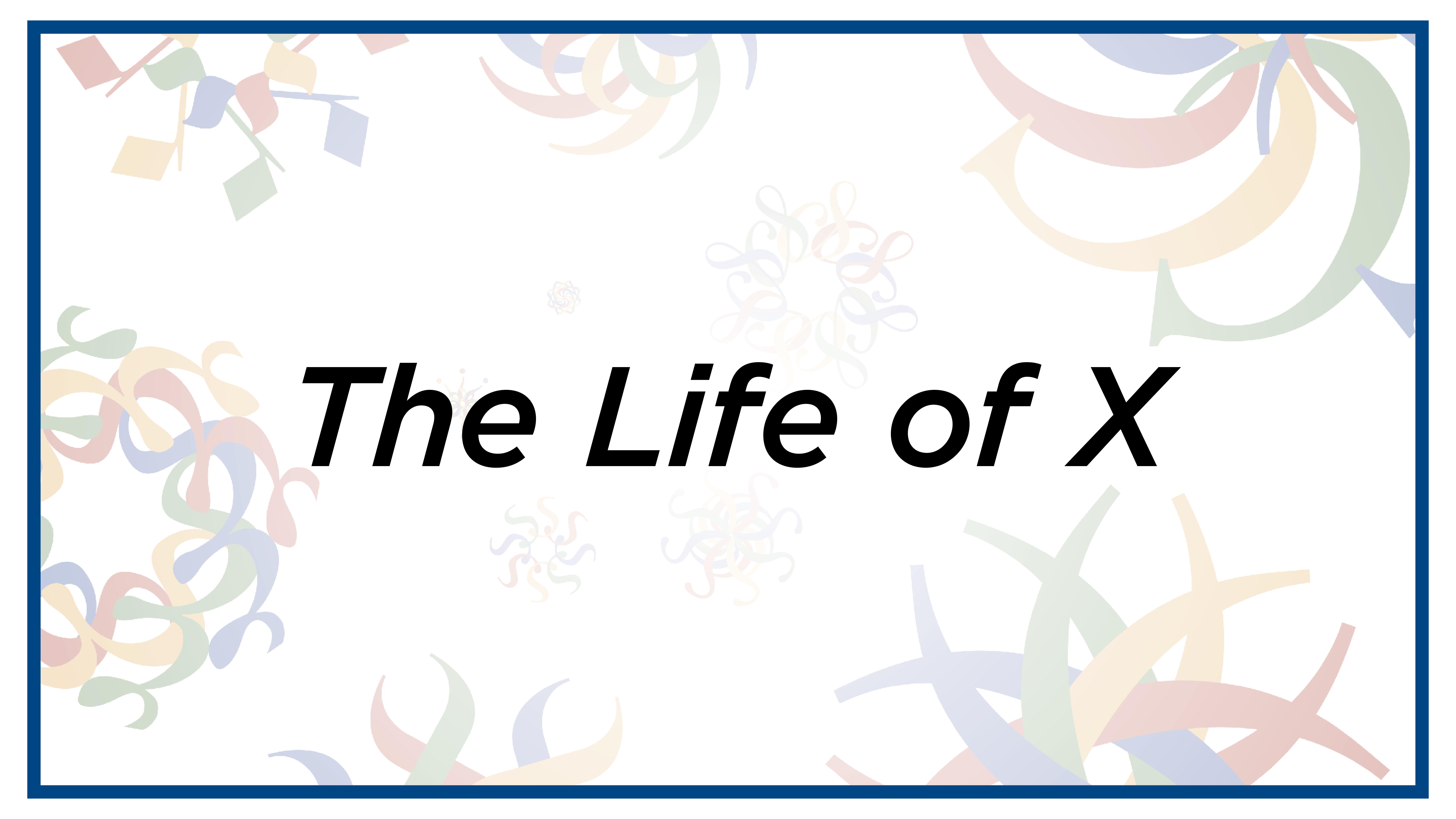Math Monday: Creating a Knitting Needle Hypercube Shadow
[sharethis]
There has been lots of making going on at MoMath lately, which we’ll take a look at over the next few posts. Recently, one of our Math Encounters speakers needed a projection of a hypercube into three dimensions as part of a demonstration. So we used Great Stella 4D to make a nice projection in general position, in which no two vertices coincide in three dimensions, and then used the measuring tool in the program to get the edge lengths. As you may recall, a hypercube has 32 edges, which break down into four groups of eight parallel edges each. All of the edges in each group project to the same length in three dimensions. In our case, the edge lengths came out to 7 3/4″, 7 1/2″, 6 7/8″, and 6 3/4″.
Next stop was a craft store, looking for material to make the edges out of physically. Knitting needles turned out to be the ideal source for brightly colored, lightweight rods — we could get them in groups of eight of the same color, to help attendees visualize the four different sets of parallel edges. So here’s the equipment at the beginning of the project, including the 32 aluminum knitting needles:

The first step was to cut all of the edges to the proper lengths. A hacksaw makes a cleaner cut through the aluminum, but a small bolt cutter produces adequate results and is many times faster. Here’s all of the pieces cut:

The next thing is to assemble the hypercube. The idea is to use a temporary binding for the vertices until the whole hypercube is in place, and then replace the vertices one at a time with epoxy putty which will harden into a permanent rigid binding for the model. For the temporary bindings, we chose a plasticine, but other possibilities include styrofoam balls, or even Model Magic compound — see below for a caveat on the temporary material.
In any case, the goal is to end up with all of the same color rods parallel. So, begin by taking two of the colors and fastening them with the temporary bindings to form four identical parallelograms:
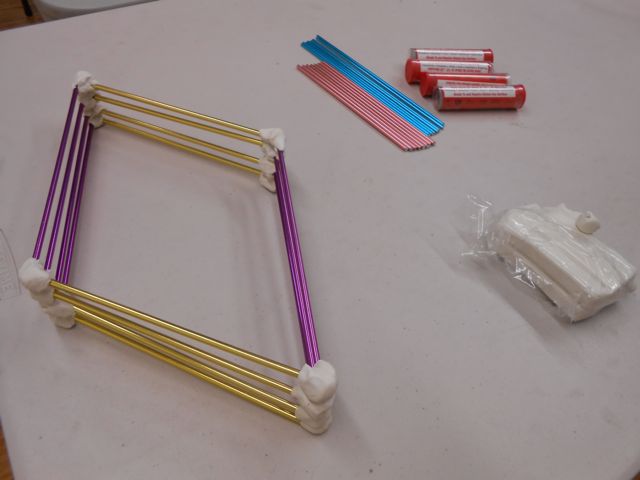
Then take another color and use the paralellograms as the tops and bottoms to make two identical parallelopipeds — the projections of two opposite cubical sides of the hypercube, which come out as stretched/slanted cubes:

Finally, take the remaining color and join corresponding vertices of the two cube projections to form the single hypercube projection. Here’s where the choice of temporary binding material becomes critical. At this point in the process, the plasticine we were using had warmed up and had become too soft to hold all the rods in place well, so many hands were suddenly needed to hold things in place while the vertices were replaced one by one with the epoxy putty.
So the next photo below shows many of the 16 hypercube vertices already replaced, but the process is pretty simple: knead up an appropriate-sized chunk of the putty — it stays completely soft for about five minutes, and then begins to thicken and set and ends up rock hard in fifteen to twenty minutes. Once the putty is completely mixed, cut away the temporary binding on a single vertex and replace it with a neat ball of the putty centered on the point of intersection of all of the incoming rods, covering the ends of all four edges that meet there. Then move on to the next vertex. The more vertices you replace, the easier the process becomes. So here’s our model with about 11 of the vertices already replaced:

Oh, and one caution: the putty gets quite warm as it hardens, and in fact, some of the aluminum knitting needles became hot to the touch during the process. Note also that some of the edges that should be are not quite parallel, due to the softening difficulties — if you find that happening, for best results you should reboot with a stiffer temporary binding. (Unfortunately this model had a deadline for being on stage, so we had to forge ahead.) Here’s the finished hypercube shadow:
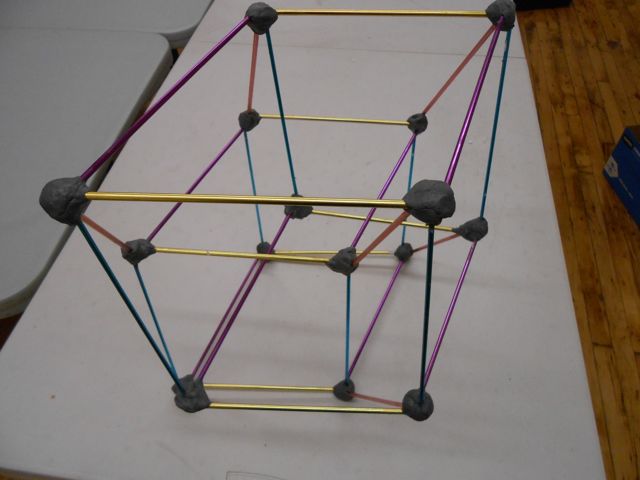
And here it is on stage, helping attendees understand the relationship between three and four spatial dimensions:

This article first appeared on Make: Online, October 21, 2013.






